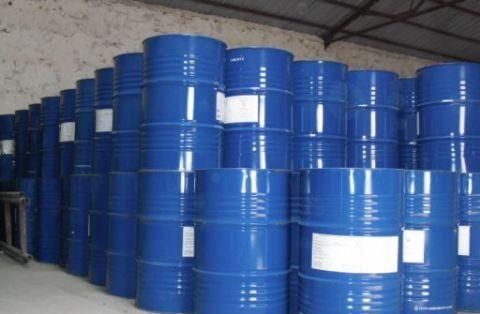
Product Description
44V20 is a mixture of isocyanate and diphenylmethane diisocyanate containing a certain amount of higher functionality, and is a dark brown liquid at room temperature.
Application
44V20 can be widely used in the manufacture of polyurethane rigid foam insulation materials; it can also be used in the fields of isocyanurate foams, coatings, adhesives, seepage prevention and leakage plugging, structural foams, microcellular self-skinning foams, automobile bumpers, interior parts, high resilience foams, synthetic woods and so on. Due to its unique composition structure, it has good foam fluidity performance, and is also used in the manufacture of products with strict requirements for the fluidity of the foaming liquid.
Physical and chemical properties
Item
Indicator
Standard
Appearance
Brown liquid
Visualization
Viscosity(25℃)mPa.s
150~250
GB 12009.3
NCO mass fraction
30.5~32.0
GB 12009.4
Density(25℃)g/cm
1.220~1.250
GB 4472
Acid content (%, HCL)
≤0.05
GB/T 12009.5
Hydrolyzed chlorine(%)
≤0.2
GB 12009.2

Packing specification
250kg/drum
Storage (use) precautions
Due to the active chemical nature of 44V20, it is very easy to react with water to form insoluble urea compounds and release carbon dioxide, resulting in drums and viscosity increase. Therefore, during storage, it is necessary to ensure that the container is strictly dry and sealed and protected by nitrogen gas.
44V20 should be stored at room temperature (15℃~35℃) in a well-ventilated room under strict sealing; with the decrease of temperature, the viscosity of 44V20 increases, which will affect the use. If the storage temperature is too low (below 5 ℃) can lead to crystallization phenomenon, so must pay attention to anti-freezing. Once crystallization occurs, must be immediately in the shortest possible time to talk about the crystallization of heating and dissolution; material heating shall not exceed 70 ℃. Localized overheating is strictly prohibited, because the product will decompose and produce gas when it exceeds 230℃. It is recommended to use the hot air oven equipped with a rolling barrel device baking. After baking, the materials in the drum must be mixed evenly. During the drum baking process, close attention should be paid to the support points of the drum to prevent leakage due to abrasion and collision.
Avoid long term storage at 50℃ to avoid generation of insoluble solids and increase in viscosity.
Shelf life
The warranty period of 44V20 is 1 year from the date of shipment, if stored under the specified storage conditions.
Safety Precautions
44V20 is of low toxicity by inhalation and dermal absorption; its low volatility makes it of low toxicity under normal conditions of short-term exposure (e.g., small amount of leakage, spillage).
Nevertheless, because 44V20 is an isocyanate compound, there is still some toxicity, which can cause moderate eye irritation and slight skin irritation, and can cause skin sensitization. 44V20 has a maximum permissible concentration (TLV) of 0.02 ppm (0.2mg/m) in air.
However, it must be noted that when the temperature of the material is heated to 40°C or more (e.g., when melting) or when working in a place that causes an increase in the concentration of suspended particles in the air, it can be toxic. Gas masks and respirators should be worn when working in similar environments or, alternatively, repeated inhalation of vapors at excessive concentrations can cause respiratory sensitization.
Even under normal conditions, due to the active chemical nature of 44V20, the operation should be careful to prevent direct contact with the skin and splash into the eyes, should be immediately rinsed with water, wash the skin with soapy water. 44V20 is very easy to react with water to release carbon dioxide, so we should ensure that the container is dry and sealed to prevent water dumping; once the container leaks into the water, do not be too tightly sealed, there should be exhaust Air holes should be left to prevent the drum from blowing up.
Combustion and Explosion Hazards
MDI series of products in the United States National Fire Protection Association (NFPA) standard manual is classified as a third class B flammable liquid; the so-called third class B flammable substances are those substances with a flash point higher than 93.3 ° C; according to the ASTM D93 (P.M.C.C.) method of testing MDI series of products of the flash point of 177 to 277 ° C. Despite the high flash point, but in the presence of oxygen and in the presence of high temperature and open flame is still flammable; if the fire is strong enough to cause the explosion of the closed packaging V explosion; hot materials can react strongly with water, release of hot materials can cause a strong reaction.
Despite the high flash point, it is still combustible in the presence of oxygen and when exposed to high temperature and open flame; if the fire is strong, it can cause the closed package to explode; the hot material can react strongly with water and release harmful gases.




